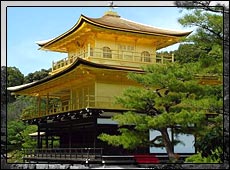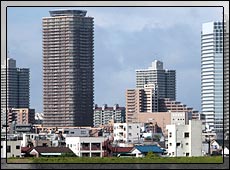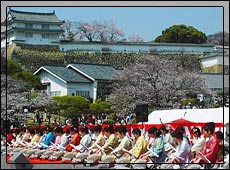|
|
About Japan
|
|
Japan underwent many phases to get into its present shape. Following is a brief account of 'about Japan' which has got a tag of one of the top hotspots for tourists of the world.
The early Japanese were gatherers, hunters and fishers. In 710- BC Nara becomes the first permanent capital, and in 784 BC the capital moves to Nagaoka and again capital moves to Heian on 794 BC. The Taira clan under Taira Kiyomori takes over the power after the Heiji war on 1159 BC. In 1175 B C the Buddhist Jodo sect was introduced and again in 1191 BC The Zen sect was introduced. |
 |
|
|
 |
In 1192 BC Minamoto Yoritomo was appointed the shogun and so established the Kamakura government. In 1603, a Tokugawa shogunate (military dictatorship) ushered in a long period of isolation from foreign influence in order to secure its power. For 250 years this policy enabled Japan to enjoy stability and a flowering of its indigenous culture. Following the Treaty of Kanagawa with the United States in 1854, Japan opened its ports and began to intensively modernize and industrialize. During the late 19th and early 20th centuries, Japan became a regional power that was able to defeat the forces of both China and Russia. It occupied Korea, Formosa (Taiwan), and southern Sakhalin Island. In 1933 Japan occupied Manchuria and in 1937 it launched a full-scale invasion of China. Japan attacked US forces in 1941 - triggering America's entry into World War II - and soon occupied much of East and Southeast Asia. |
|
|
| After its defeat in World War II, Japan recovered to become an economic power and a staunch ally of the US. While the emperor retains his throne as a symbol of national unity, actual power rests in networks of powerful politicians, bureaucrats, and business executives. The economy experienced a major slowdown starting in the 1990s following three decades of unprecedented growth, but Japan still remains a major economic power, both in Asia and globally. In 2007, Japan began a two-year term as a non-permanent member of the UN Security Council. There are many more interesting facts about japan. The basic features of the four main islands are shapely mountains, sometimes snowcapped, the highest and most famous of which is sacred Mt. Fuji; short rushing rivers; forested slopes; irregular and lovely lakes; and small, rich plains. Mountains, many of them volcanoes, cover two thirds of Japan's surface, hampering transportation and limiting agriculture. Above all, it's eye-caching place to move onto. |
 |
|
|
|
|







